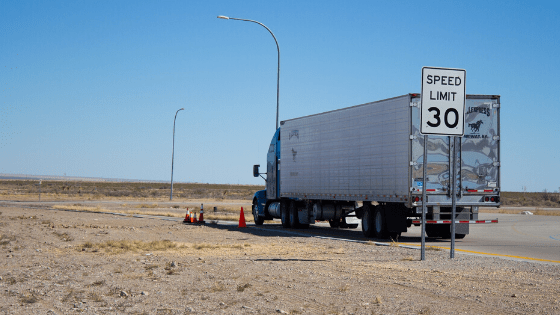Reducing Downtime: How Technology In Fleets Should Be Leveraged
March 23, 2020
There are many unexpected costs that can arise in fleet operations, and recently, managers are focusing on the costs associated with downtime. As these costs can add up to cost businesses hundreds if not thousands of dollars, it’s something that needs to be addressed. Specifically, what is causing downtime, how productivity is halted and how fleets can focus on reducing downtime with new technology.
What Is Downtime?
Downtime is broadly defined as the time in which an asset, machine or resource is unavailable or unable to complete work. In fleets, this typically happens when a commercial motor vehicle, or even a driver is not able to complete planned routes. Causing work to halt. While the reason for why the downtime is happening can vary, the effects can be financially crippling. Typically when fleet-based businesses experience downtime, it is related to the following:
- Unplanned roadside breakdowns of vehicles
- Travel delays on routes
- Missing cargo loads which require additional drivers to be dispatched with the missing items
- Drivers or vehicles being declared out-of-service (OOS)
While some forms of downtime may be more common than others, they can all cost businesses financially.
Reducing Downtime: How You Can Leverage Technology
Luckily, technology has advanced to allow for new telematics and IoT solutions to be leveraged by fleets to reduce downtime. Currently, there are hardware and software solutions that can be installed in vehicles or implemented in processes to help reduce all of the above forms of downtime before they happen. Below we discuss each of these forms of downtime and how they can not only affect the bottom line of a fleet-based business, but how new technology could be a key factor to reducing downtime.
Unplanned Breakdowns
One of the most common causes of costly downtime, is the unexpected breakdowns or the unplanned but necessary servicing of vehicles and assets. Typically this happens when there is an incident that causes damage to the asset, or a lack of preventive maintenance to result in deterioration. This type of downtime can be translated into hundreds if not thousands of dollars of downtime that company’s take on. To be specific, Vehicle Service Pros found that downtime in fleets can cost on average approximately $448 to $760 a day, per vehicle.
While some fleets may feel as though they’re doing everything they can to keep their team efficient and productive, it’s important for management to invest in tools, like maintenance management solutions to maintain this. Such solutions are designed to record asset activity and utilize the data against algorithms and trends to predict when certain servicing or maintenance should be done. Ultimately working in a proactive nature to ensure that assets are in peak working condition so the business can continue to operate smoothly.
As some breakdowns can be avoided (or at least made less severe) through preventive maintenance, it’s important for fleets to take advantage of software solutions that can help. When it comes to a complete maintenance management solution that quickly and easily manages any and all fleet maintenance, there is ZenduMA. The solution allows for fleets to run entire maintenance operations effectively and efficiently on one platform. As it automatically and wirelessly captures vehicle data in real-time and applies the data to algorithms to determine when future maintenance should happen, it can be critical to reducing downtime.
Unplanned Route Delays
Sometimes downtime isn’t as obvious as a vehicle being out of commission. In some cases, downtime is noticed in situations when fleets are not operating in an efficient manner. Similar to when a vehicle breakdown unexpectedly happens, driving inefficiently or taking non-optimal routes can cause downtime that costs businesses. For example, unknowingly choosing a route that should be avoided because of rush hour traffic delays or arrival times coinciding with long unloading wait times at destinations. All of these minutes of halted work add up and eventually can cost a business in lost time. That’s why using a tool to review, manage and implement tactics to reduce all forms of route downtime is critical. Some telematics software applications do this as the software takes into consideration traffic, delays and most efficient routes to boost efficiency and productivity.
Missing Deliveries And Additional Resources
Even if staff do everything they can to ensure that deliveries are properly loaded, items can still be forgotten. When this happens, downtime occurs because once the initial delivery arrives at its destination, companies must coordinate extra efforts to resend the additional missing cargo. While in some cases the cargo can be placed with other deliveries going to the same area or same destination to remain efficient, this isn’t always possible. When this is not possible, additional vehicle support is required to send the missing cargo on its own – which can add extra costs to a single delivery. This can be financially straining as fleets don’t always have the surplus of finances, manpower or vehicles to be doing this regularly.
When it comes to increasing productivity by reducing downtime caused by unplanned route delays or forgotten cargo, there are software solutions that work intelligently throughout your organization to keep efforts profitable. ZenduOne – Work, for example, is a tool that can optimize routes and allow for electronic work orders to be completed to ensure operations are efficient with the click of a button. So when your team is dispatched, you know that the route won’t unknowingly be costing you money.
Declared Out-Of-Service
Last, but not least, one form of downtime that some fleets may overlook is the unproductive time that happens when drivers or their vehicles are declared out-of-service. When discussing drivers that are placed OOS, typically it is due to the individual operating a commercial motor vehicle or being on duty for too long or without proof of their time on duty. Meaning, they are in excess of the maximum duration of time, or are unable to show a valid record of duty status.
When vehicles are placed out-of-service, typically it is because the motor vehicle or its load does not meet strict requirements. For example, if the vehicle does not meet safety standards because it requires repairs or if the load is hazardous to operate. Both focusing on the concern that continuing to operate the vehicle may cause an accident or breakdown.
Each situation is considered a form of costly downtime because when a driver or vehicle is placed OOS, deliveries and routes are not able to be completed until repairs are made, loads are made safer, or drivers who were declared out-of-service are able to be placed back in service.
When it comes to ensuring that your drivers are always remaining compliant to hours-of-service (HOS), sometimes it can be hard to monitor. Luckily, electronic logging devices (ELDs) have been leveraged as a great tool to do this. As the device easily installs into most commercial motor vehicles and automatically pulls engine data to record when a driver is or is not on duty, it’s highlighted as a reliable way to cut down on record of duty status errors. Not only that, for many fleets, it’s a requirement to have as of December 2017! Interested to learn more about ELDs and their features? Check out GoFleet, an experienced provider in telematics solutions.

Can’t Avoid Downtime? Make The Best Of It
Sometimes, downtime can’t be avoided. In times like this, it’s important for managers to try to make the best of the situation and prepare for downtime. The first suggestion is to try to make the best of downtime when it happens. What this means is to try to find other ways to combat unexpected breakdowns that happen in the middle of a route or when vehicles are required to be placed back in service. For example, having extra vehicles or assets available so routes can continue and delays are minimal. While this is difficult for smaller fleets, it’s something to keep in mind. The second suggestion of making the best of downtime (if reducing downtime is unlikely), is to prepare for it by completing any preventative maintenance during non-peak hours. So either scheduling servicing to happen around prime work hours or when drivers are not scheduled to drive.
If you’re interested in learning more about how downtime could be costing your fleet or what solutions are available to help you, contact us today! We’re confident that we have an innovative solution that will help keep processes moving.



